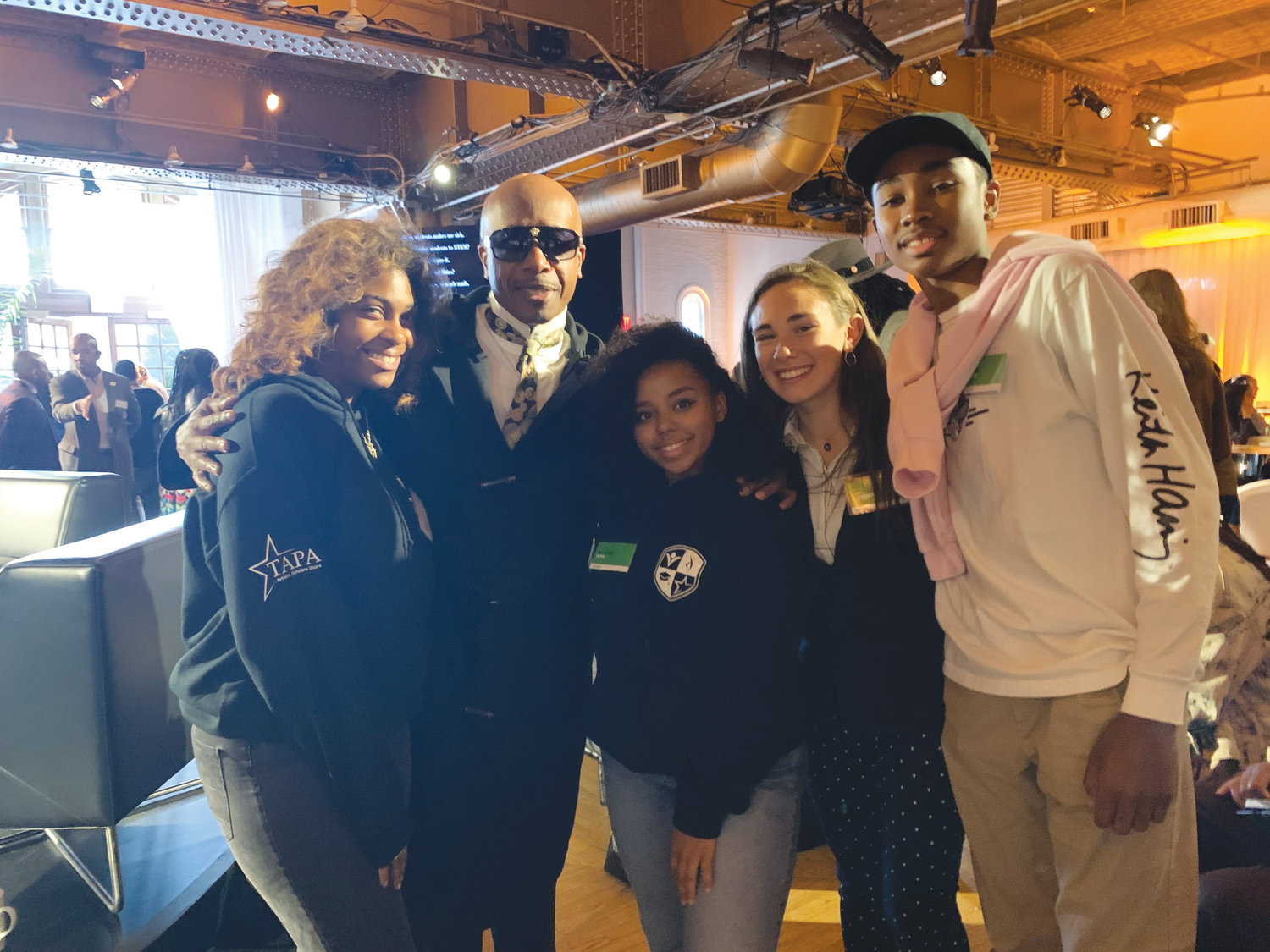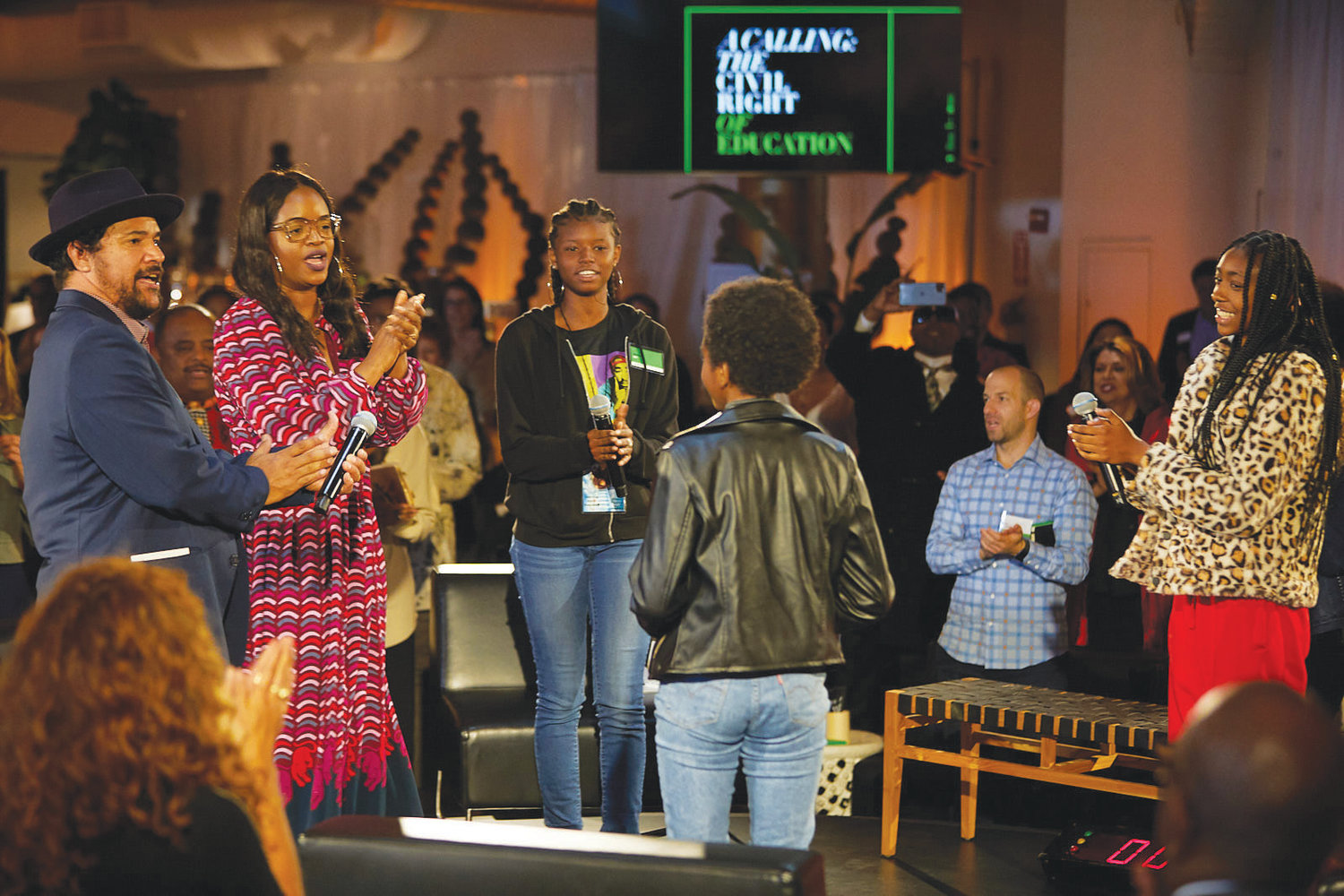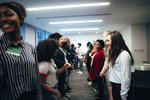- FRIDAY, APRIL 26, 2024
A national calling: Why education is a civil right
Mt. Hope senior spends two days in New York learning about education, civil rights and the power of activism
A two-day event hosted in New York City called upon generations of activists, celebrities, artists, educators and students to reflect on the achievements and efforts of past and present changemakers. …
This item is available in full to subscribers.
Please log in to continue |
Register to post eventsIf you'd like to post an event to our calendar, you can create a free account by clicking here. Note that free accounts do not have access to our subscriber-only content. |
Day pass subscribers
Are you a day pass subscriber who needs to log in? Click here to continue.
A national calling: Why education is a civil right
Mt. Hope senior spends two days in New York learning about education, civil rights and the power of activism
A two-day event hosted in New York City called upon generations of activists, celebrities, artists, educators and students to reflect on the achievements and efforts of past and present changemakers. As activists shared their stories through narrations, spoken word, music, dance and art, students across the United States learned what it takes to be an activist while reviewing America’s history of racial injustice and the nation’s progress towards equity in education.
The wave of reality
When I walked into the Altman Building, I felt a surge of energy. It was like a wave had just swallowed me, soaking me with reality, empowerment and purpose. Not for one second did I feel like I was drowning. In fact, it felt more like a breath of fresh air, a rejuvenation.
From working with my school and XQ, I’ve learned the importance of centering equity in our design for a reimagined high school. However, coming from a predominantly white, coastal town, I felt as though I had not experienced the reality of others residing in diverse areas throughout the nation. It wasn’t until attending “A Calling: The Civil Right of Education,” did I feel as though I had gained enough knowledge to truly understand the importance of equity in education. I had the opportunity to speak with many people, one of the conversations being with Maria Echaveste, who is the CEO and president of the Opportunity Institute. Our conversation enlightened me and was a huge turning point in my understanding of injustice in education.
With strong conviction and fortitude, she told me a zip code should not determine your education; neither should race or gender. No one chooses the race, zip code or gender they are born into. No one has control over these factors. So why should it determine the boundaries of someone’s potential?
Public schools may be established and separated by cities or neighborhoods, but never should those factors define the quality of the education. Two schools in different locations with varying demographics should have the same ability to supply their students with the resources and tools necessary for a quality education.
I learned there’s a huge difference between equity and equality. The act of treating everyone equally is not enough to allow them to succeed. Equity, on the other hand, is the action of providing everyone with the tools they need to succeed. Let education be that tool and let public schools be that path to success.
It is inequitable when certain cohorts of students are left behind in their learning plans or when public schools are not able to provide an education comparable to their neighboring towns. How can the inequity of education to all of our nation’s children ever be justified?
Reflecting on the event, I’ve realized I learned more about the civil right of education over the course of two days in New York City than I have from 13 years of schooling. I’ve never felt more inspired to take action against injustice. I immediately realized the gap in equity in my own school, as well as the changes that need to be made inside the classroom to ensure that every student receives an education that can pave their path for success. Among the rolling surge of a swallowing wave, I felt the similarities everyone in the room shared: to learn and be active as ordinary people in extraordinary ways towards our goal of education equity.
Defining activism
A panel including MC Hammer, artists Brandan Odums and Hank Willis Thomas, actress Erika Alexander and journalist Susan Taylor, characterized an activist, leaving every audience member with the enlightenment of what an activist looks like:
Activism is not a separation of oneself. It is not a separate part of a personality or a characteristic. It is the embodiment of a person. An activist is a person who loves themselves and their community enough to defend it. An activist is an artist who understands others’ truth without denying their own.
Of course, the art of activism has repercussions. Defending your beliefs and community comes at a price. Whether the cost be your reputation, safety or loved ones, an activist is willing to put themselves in harm’s way if it means doing the right thing. Ultimately, activism is a choice that every person has the capability to make.
In a modern activist’s world, social media is a double-edged sword. A single tweet could rally thousands of people, or alienate millions. When the entire world is literally in the palm of your hand, it is important to reflect on your contribution and delivery. The profile an activist maintains on social media is public to all and is available at any moment in time, giving anyone access to their published thoughts and ideas.
It’s incredibly important for an activist to build their image, but the most challenging part is being aware of the impact it has on others and ensuring that the digital representation matches the person behind the screen. “Thinking before you post” may be obvious and trite, but an activist should ask themselves, “Is this me?” and define that person among the lines of truth.
In order to encourage and amplify the voice of an activist, education is key. Education empowers an activist with the knowledge required to recognize injustice and take action against it. This education does not only pertain to a series of history classes but to lessons on the effects of an active voice and how to use it. When this discipline is not available to all students in public schools, the nation is depriving an entire generation of the tools they need to be active in society.
The Power of Storytelling: Naomi Wadler
Naomi Wadler, a 13-year old girl from Alexandria, Va., served as a guest speaker at the calling and spoke about her experience as a young activist.
When she gave her famous speech at March For Our Lives, she was only 11 years old. Her speech focused on the untold stories of female African American gun violence victims. Underrepresented, their murders remain a vague statistic while the debate on gun violence rages on. Before attending March For Our Lives, Naomi had led a walkout at her elementary school to commemorate and honor the victims of the Parkland shooting and Courtlin Arrington, an African American teenager shot dead at her high school in Alabama around the same time.
In her speech, she acknowledged the words of Toni Morrison, “If there is a book that you want to read but hasn’t been written yet, you must write it.” Naomi retold the stories of African American women who were victims of gun violence and continues to share their untold history.
This same message of telling forgotten stories remained a recurring theme throughout the discussion at “A Calling: The Civil Right of Education.” Through storytelling, the awakening of a nation and its youth is attainable. The stories of former and contemporary change-makers need to be preserved and the storytellers need amplification, especially the youth. However, the power these young voices need to amplify their cause is buried with the forgotten civil right of education.
‘A Calling’ — event overview
The event hosted at the Altman Building in New York City spanned over two days and called upon students, educators, activists, artists and community members to reflect on the civil right of education. Leaders of XQ, The Gathering for Justice, UNCF (United Negro College Fund) and the Emerson Collective gathered generations of activists to speak and perform throughout the event and call attention to the American history of racial injustice, as well as the nation’s progress toward equity in education.
Before beginning the celebration on Wednesday, Oct. 16, XQ Institute co-founders Russlynn Ali and Laurene Powell Jobs, along with author Geoffrey Canada, framed the night as an evening of recognition and reflection on past civil rights activists and their work, while the following morning focused on present day activism in education.
The powerful words and spirits of Ella Baker, César Chavez, W. E. B. Du Bois, Corretta Scott King, Thurgood Marshall and Malcom X, along with many others, were shared in accompaniment to a violin performance. Trailblazing women Minnijean Brown-Trickey, Marian Wright Edelman, Myrlie Evers-William, and Dolores Huerta, who are still with us today, narrated their personal experiences and gave words of encouragement to the young audience members. Actress Anna Deavere Smith performed a poetic collection of our nation’s past before leading the audience into singing “Amazing Grace.”
With performances by Sweet Honey In the Rock, Toshi Reagon, Aloe Blacc, and many others, the evening concluded with a special message from Harry Belafonte. Although he was not able to attend, Carmen Perez paid tribute to his work before showcasing a video highlighting his accomplishments in the civil rights movement and their continuation, “The Civil Rights Movement didn’t end, it is just taking a deep breath.” After a lifetime of activism, Mr. Belafonte is heard calling on the nation’s youth to lead a recharged revival of the movement.
The second day of the event consisted of a series of panels focusing on current activism and the civil right of education. MC Hammer led a discussion on the role of art in storytelling and activism, followed by Luis Miranda Jr. and Marc Bamuthi Joseph contributing their words and wisdom. Naomi Wadler led a conversation about policy and action before the audience was led through a data walk around the room, diving deeper into the statistics of public school reality.
Students who attended the event were required to compile their experience into a creative project honoring a changemaker of their choice and emphasizing the power of storytelling. Through this project, students strengthen their voice and educate their communities on the civil right of education.
Other items that may interest you











